Prescribed or emerging change?

Like Mr. Jourdain, we are all called one day or another to implement change. As consultants or managers, we are often required to seek to make it happen and support it for it to last in the long term. It is then relevant to take a step back and ask oneself not only why and what to change but also “how?”.
The only fact of seriously raising the question about the method is already a good sign and an abundant literature – although sometimes a little esoteric -exists on the subject. There is however a more pleasant way of asking oneself the right questions: by attending the breakfast of Why Consulting “Supporting transformations, mobilising the agents for change at the service of a growing ambition”, organised in the last quarter of 2016.
For those who have not had the chance to listen to Guillaume Scribot, Director at WHY Consulting and to Sébastien Guyot, VP Corporate & Travel Agencies Sales at Air France KLM, there has been much talk about the opposition between “prescribed” and “emerging” change.
“Prescribed” change is the most common way of conducting change, precisely in the sense that it seeks to drive it, to steer it.
We are thus in an analytical approach, we seek to understand exactly the initial situation (diagnosis phase) and then to define the target situation as carefully as possible, before drawing the trajectory of change leading from one to the other.
The legitimacy of this approach relies heavily on the expertise of those (consultants or managers) who lead it. We are typically in a project of re-engineering or of product launch with a schedule, milestones, a test phase and the much-vaunted “deployment” phase. It is at this moment – only – that the first effects of change are noticeable. It is also during this deployment or implementation phase that the efforts requested from the teams are more important.
This logic is against the one of “emerging” change, designed from the beginning as participatory, harnessing collective intelligence.
This “bottom-up” dimension allows everyone and each team to find a solution potentially different. But the main characteristic of emerging change is to be especially action-oriented. At the service of an ambition expressed in terms of results (which does not foresee the ways and means), operational stakeholders must directly set themselves in motion and experiment with change.
The design and execution are almost simultaneous and we could even say that the design (in the sense of conceptualisation and formalisation) is often created after the implementation!
Then, those who support this change should have the modesty of letting initiatives express themselves and unleash the teams’ creativity. The key messages are the development of a positive mindset, focused on solutions and not on problems, one that rewards successes (even partial ones, i.e. “the baby steps”). In this type of approaches, an operational focus should be kept (we implement it immediately) and a constructive confrontation should not be feared. The empowerment of stakeholders in charge of finding solutions “at their level” should go hand in hand with some form of acceptance of uniformity loss, at least initially. In return, emerging change often avoids the pitfall of stalemate or the rejection by the teams: we mobilise everyone from the very beginning. And the first results are immediate.
As Guillaume Scribot explained it well, we should not consider that one type of change is superior to the other. First and foremost, we should ask ourselves which one is the most adapted to the context and the management’s goals (Emergency or not? Willingness of control over the target? Incremental change or strong rupture? Need of a similar solution or not?)
Sébastien Guyot’s testimony that followed brought a valuable operational perspective to this distinction. His message is simple: “Emerging change works!”. He revealed to us how his managers (all his managers, 100%, not just a “working group” or a “pilot” one) were able to come together to reach ambitious goals of change in their managerial practices (the “Boost” project). Even though a CRM project is underway (the ultimate “prescribed” change), an approach explicitly based on the notion of emerging change helped developing sales and strengthen the commitment of the teams.
With the support from WHY Consulting, Sébastien Guyot first took advantage of a seminar to set in motion his organisation and help his managers in projecting themselves “positively” into the future, without looking to anticipate, at this stage, how they would collectively and individually commit to progress and advance their teams.
For 10 weeks, coaching sessions, facilitated by Eric Bodin, Director at WHY Consulting, helped managers implement this commitment in an “emerging” spirit: at their own pace, following their intuitions or desires, by reinforcing their strengths or filling gaps.
A second seminar allowed to put these experiences to the test and highlighted best practices to build a new management framework in which these practices were explained in-depth and made durable.
The exchanges in the room and the testimony of our guest allowed to show by example that theoretical opposition between prescribed and emerging change actually covers a true continuum. The two methods are rarely “pure” and, in both cases, a professional coaching is advisable. The management and those who advise it should balance the use of both working methods based on the topics, emergencies and on their goals.






